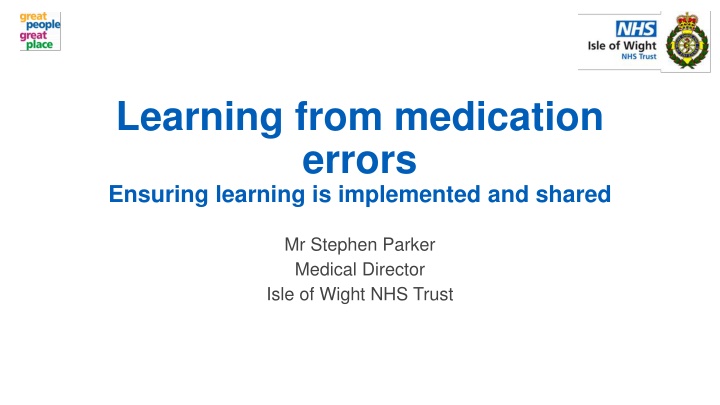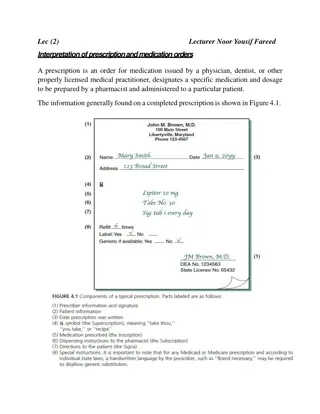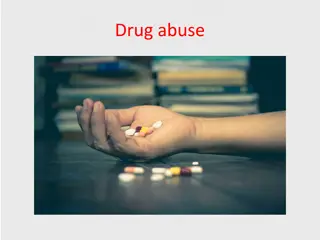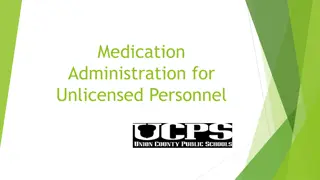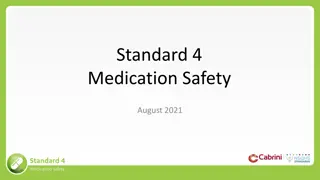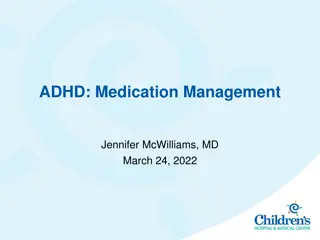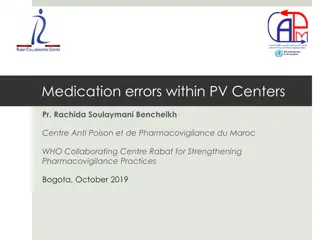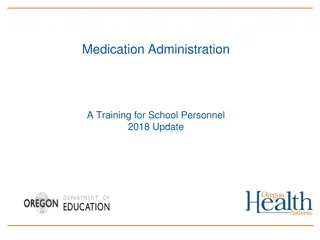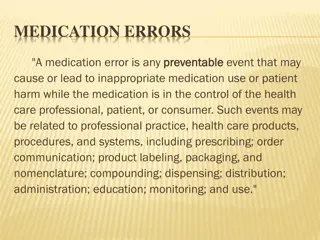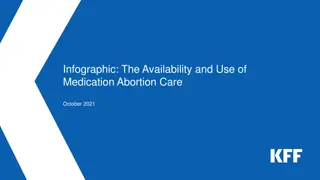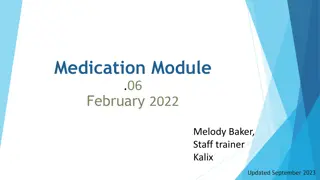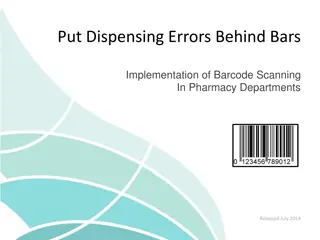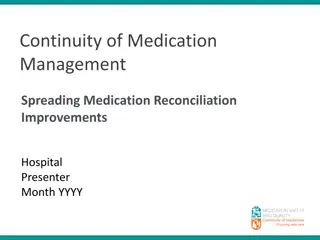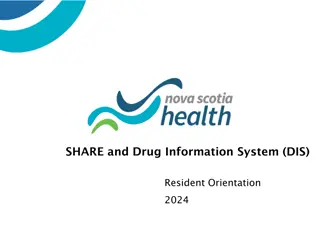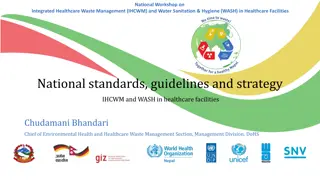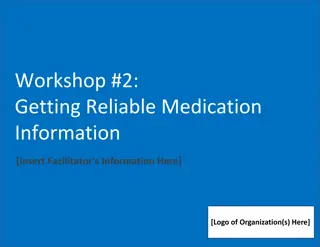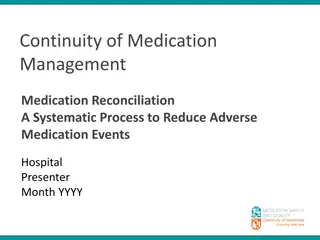Medication Errors: Building a Learning Culture in Healthcare
Exploring medication errors from a patient safety perspective, this content delves into the complexities of healthcare systems, human fallibility, and the importance of organizational culture in learning from mistakes. It emphasizes the need to recognize and address factors contributing to errors, improve safety culture, enhance teamwork and communication, and design systems that facilitate error reduction. Embracing a learning culture can transform healthcare practices and promote continuous improvement.
Download Presentation

Please find below an Image/Link to download the presentation.
The content on the website is provided AS IS for your information and personal use only. It may not be sold, licensed, or shared on other websites without obtaining consent from the author.If you encounter any issues during the download, it is possible that the publisher has removed the file from their server.
You are allowed to download the files provided on this website for personal or commercial use, subject to the condition that they are used lawfully. All files are the property of their respective owners.
The content on the website is provided AS IS for your information and personal use only. It may not be sold, licensed, or shared on other websites without obtaining consent from the author.
E N D
Presentation Transcript
Learning from medication errors Ensuring learning is implemented and shared Mr Stephen Parker Medical Director Isle of Wight NHS Trust
Introduction Medication errors from patient safety perspective System complexity and human fallibility The importance of organisational culture in learning Learning from mistakes and incidents Triangulating information from multiple sources Sharing the outcomes from incidents investigations Embedding the learning in practice Experience as an early adopter of PSIRF
Medication errors Medication reconciliation 1 Prescribing 2 Verification 3 Dispensing 4 Administration 5 Monitoring 6
Complex systems We all work in complex systems No one comes to work to do bad job Healthcare professionals (as humans) prone to error. Systems that depend on perfect human performance are inherently flawed Systems should be designed so that it is easy to do the right thing. Create a culture where human error is seen as a source of important learning
Fallibility Medication errors in all clinical settings Incidence can be reduced if not completely eliminated Understand why staff make errors, especially system factors that threaten safety Human factors are organisational, individual, environmental, and job characteristics that influence behaviour in ways that can impact safety Allows identification of factors Improve the safety culture of teams Enhance teamwork and communication Improve the design of systems Identify what went wrong and predict what could go wrong in the future
HSIB The aim of resilient healthcare is to improve an organisation s ability to succeed under variable conditions in order to improve the safety and performance of routine work. This requires staff and leaders to learn to recognise changing conditions such as an increase in size and complexity of case loads and how to adjust procedures to match those working conditions whilst sustaining safety and performance.
Introducing a learning culture NHS culture has changed over the last decade Previously Reactive and bureaucratic Poor methodology focused on process rather outcomes Resulted in non-engagement, defensiveness behaviour and blame Working towards Focus on learning as part of fair and just culture Concentrating on potential improvements rather than the investigation Embracing robust patient safety systems Shared learning with a focus on causal factors Supporting staff and particularly the second victim of serious incidents
Characteristics of learning culture Respond positively to national reports and guidance Feel Responsive to incidents, errors and complaints Individuals who willing to report and co-operate empowered to address patient safety concerns Confidence in communicating and sharing information Willingness to learn from mistakes and near misses Responsive to the need for change
Essential components of a learning culture Build Trust 1 Encourage reflection 2 Demonstrate learning values 3 Enable knowledge sharing 4 Empower employees 5 Formalise learning as a process 6
Learning from incidents Extensive time and resources committed to investigations Most incident reporting systems are used for alerting, logging and managing incidents Focus on the most serious outcome rather than opportunity for learning Set up is often hinders extracting analytical data Reporting is often quantitative rather than thematic Action plans are often not prioritised and not followed through to completion Investigation process often lacks quality assurance
Triangulating information Challenging and complicated Powerful when you can link incidents, complaints and claims Challenges around coding and classification Often a manual process Needs good co-ordination between teams When triangulation does occur well it provides valuable information Service reviews Outside agencies Individual clinicians (e.g. appraisal)
Sharing the learning Need to share learning from both incidents and near misses Needs to be timely the sooner the better Learning should be shared repeatedly at every opportunity Individual patient and patient feedback Cluster reviews Themed newsletters Presentation to services and divisions Annual reports Supported by outside resources National reporting GIRFT litigation claims NHS Resolution Scorecards
Embedding the learning Embedding learning can be a challenge Sadly, repeated incidents of similar nature due occur Barriers poor quality investigations, engagement, blame and fear Rome wasn t built in a day To embed learning Strong strategic and operational leadership Adequate time and resource Co-production and staff engagement When does failure to learn become a conduct and capability issue?
So how do we complete the puzzle? Cultural change is occurring Processes around incidents, complaints and claims are robust Engagement is good We still have silo working Shift the focus and embrace the principle behind PSIRF
PSIRF New approach to incident management Facilitates inquisitive examination across wide range of incidents Embraces spirit of reflection and learning and not a work of accountability Systematic, compassionate and proportionate response Informed by good practice in healthcare and other settings Anchored on principles of openness, fair accountability, learning and continuous improvement
PSIRF Replaces the Serious Incident Framework Broader scope Move away from reactive thresholds Proactive approach to learning Promotes proportionate safety management response Investigation approach Safety investigation now tightly defined Quality of investigation priority Investigations based on opportunity for learning Experience of those affected Engage with families, carers and staff Staff treated with equity and fairness as part of a just culture
PSIRF Investigator expertise, experience, time and authority Investigators need to be trained Authority to act autonomously Time and resources to complete investigations Investigation timeframe Flexible and agreed in advance Ideally completed within three months Terminology System-based PSII replaces route cause analysis Governance and oversight Strengthen with commissioners assuring investigations and plans covering multiple settings
Responses to PSI Immediate safety actions Case record or notes review Being open conversation PSII Safety huddle After action review Mortality review Transaction audit Clinical audit
Early adopter experience Requires a fundamental change in mindset. Provides different set of tools in the toolbox Need to understand pros and cons of different approaches Less mechanistic but does still require a degree of rigour Need to define local priorities that are owned by the services Has potential to provide the missing link
